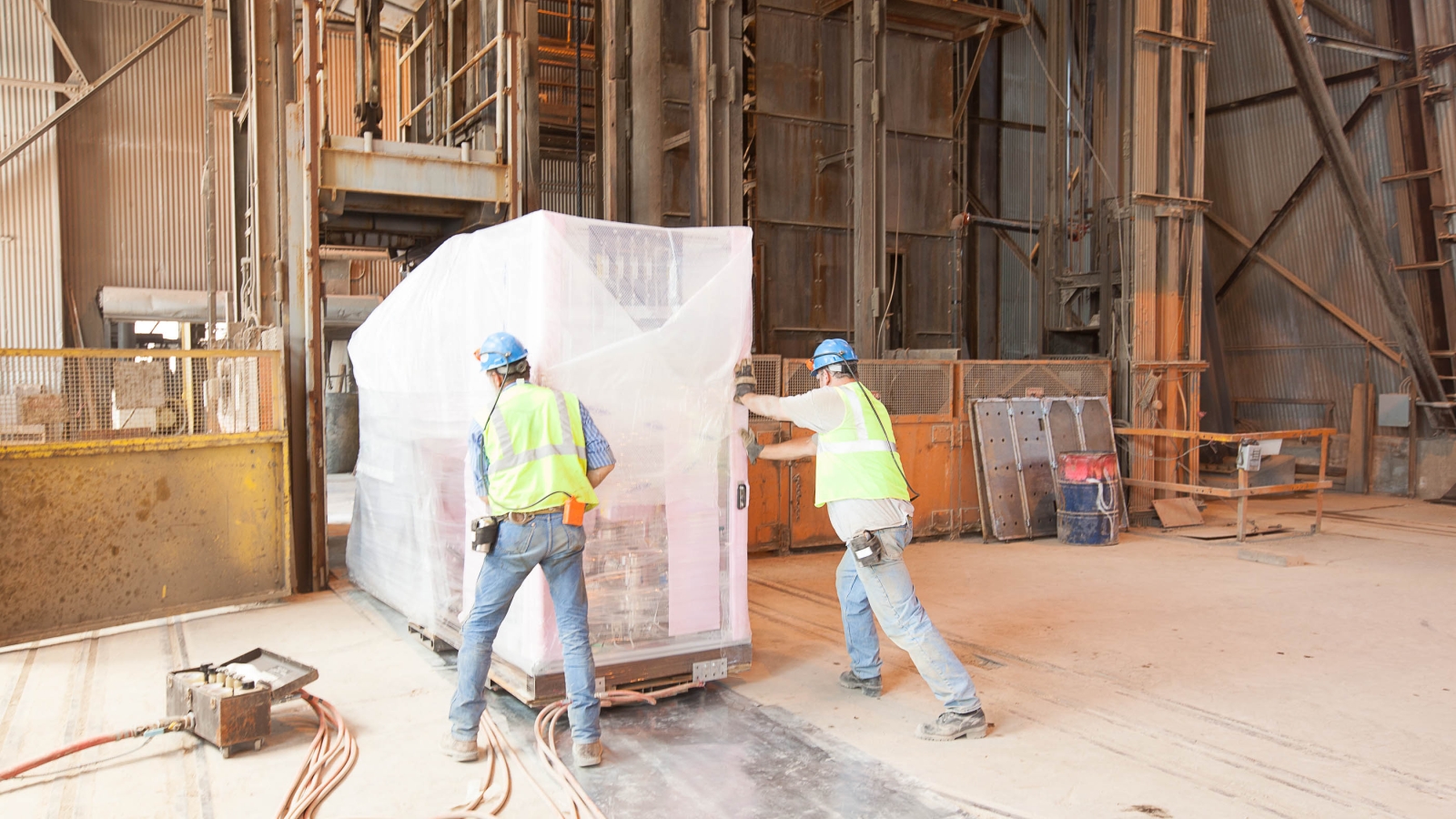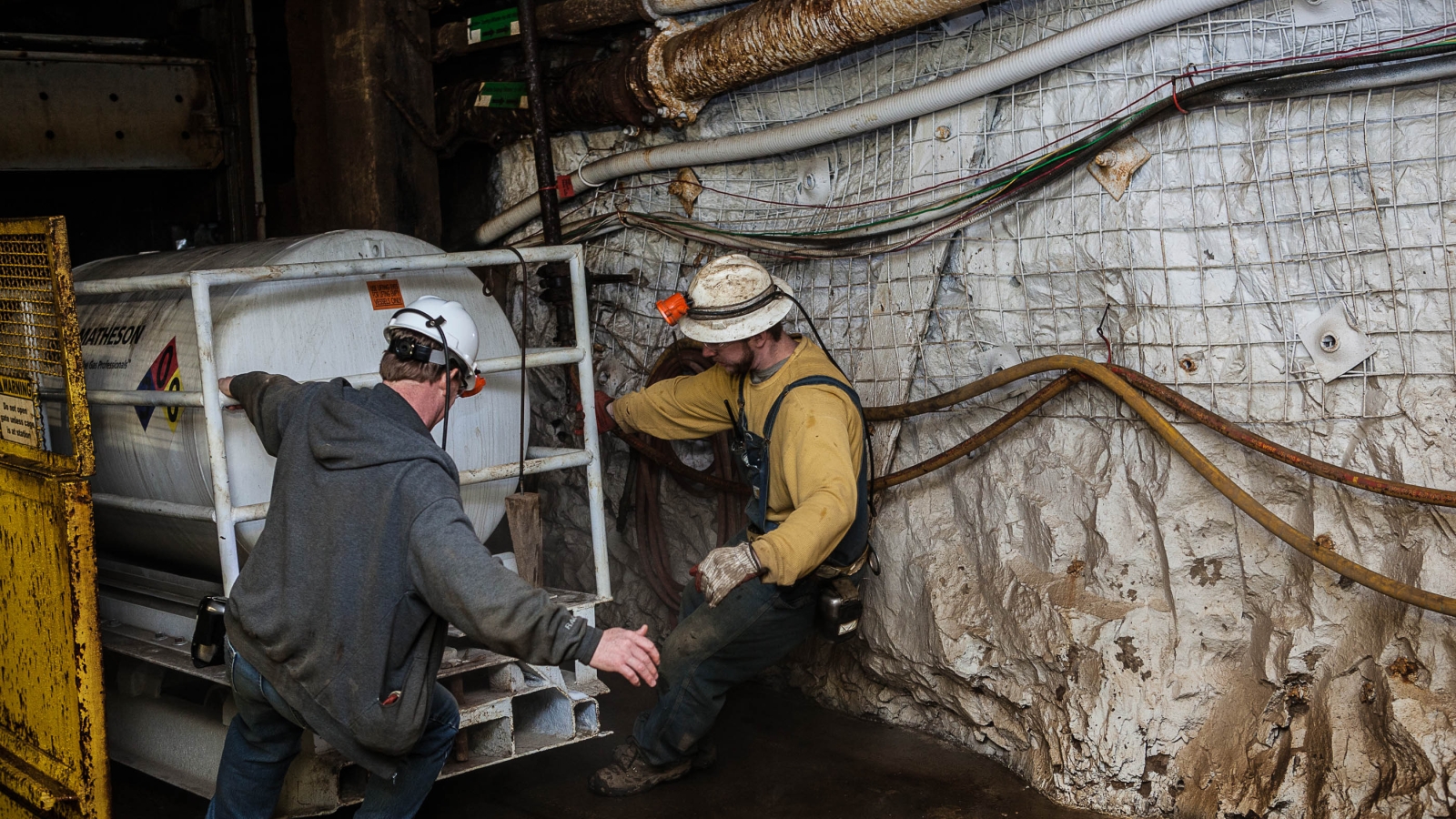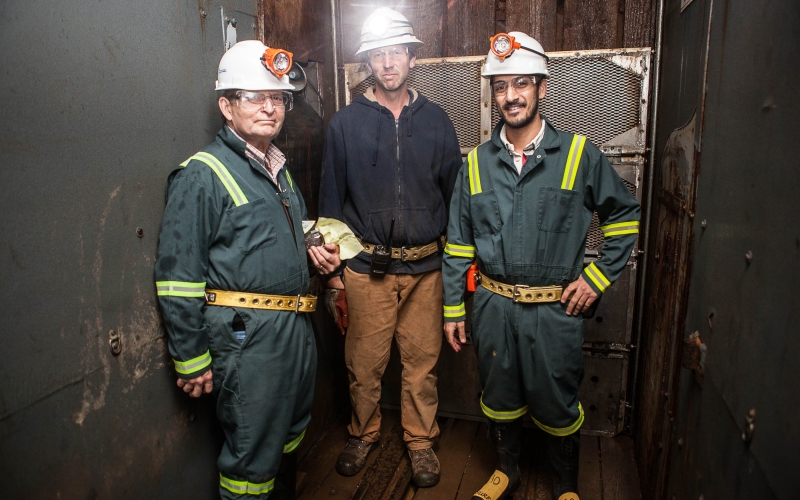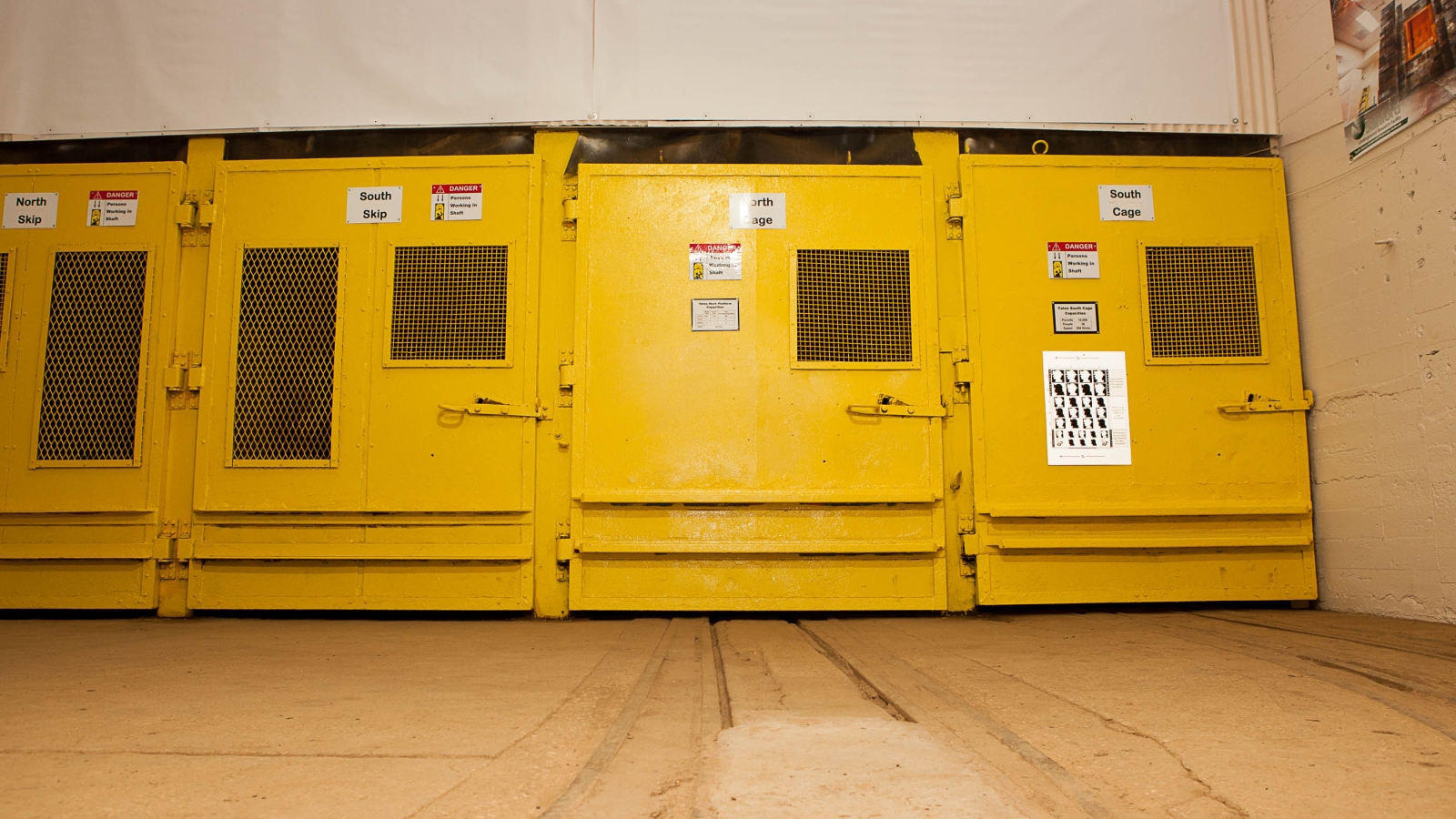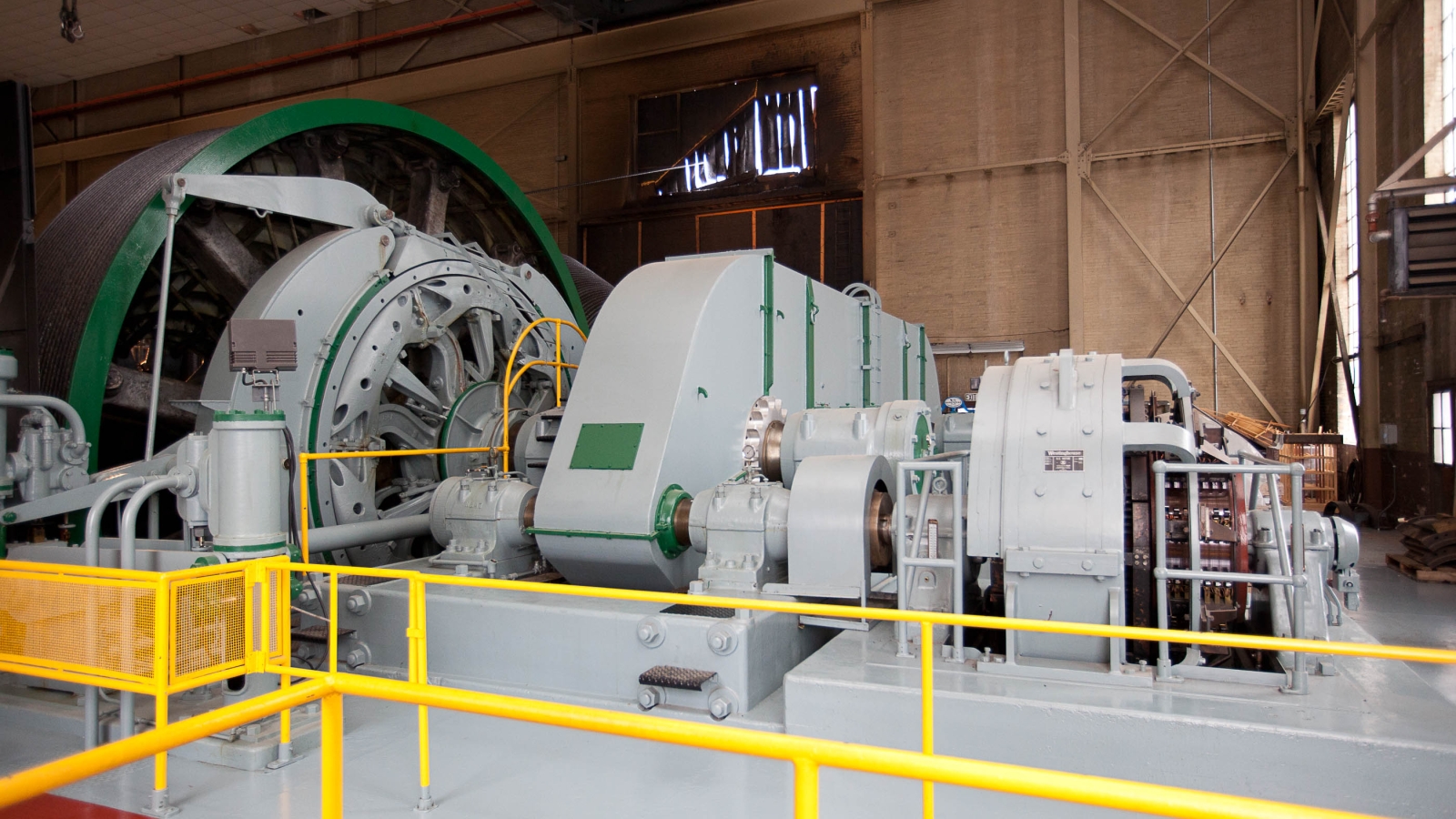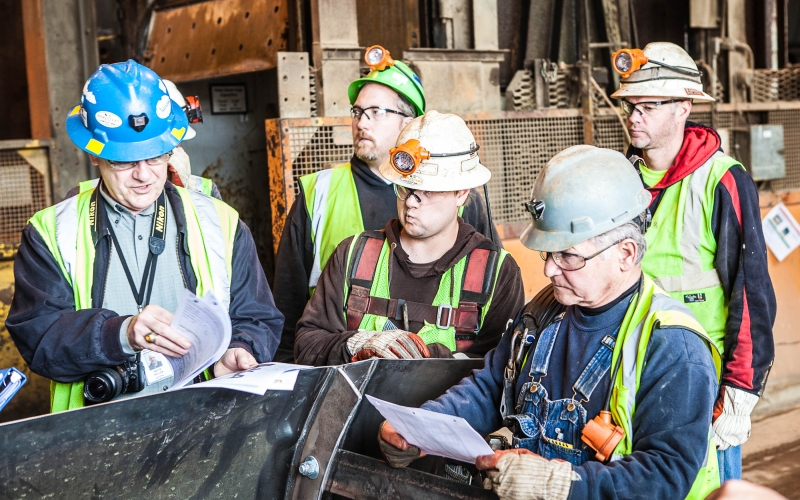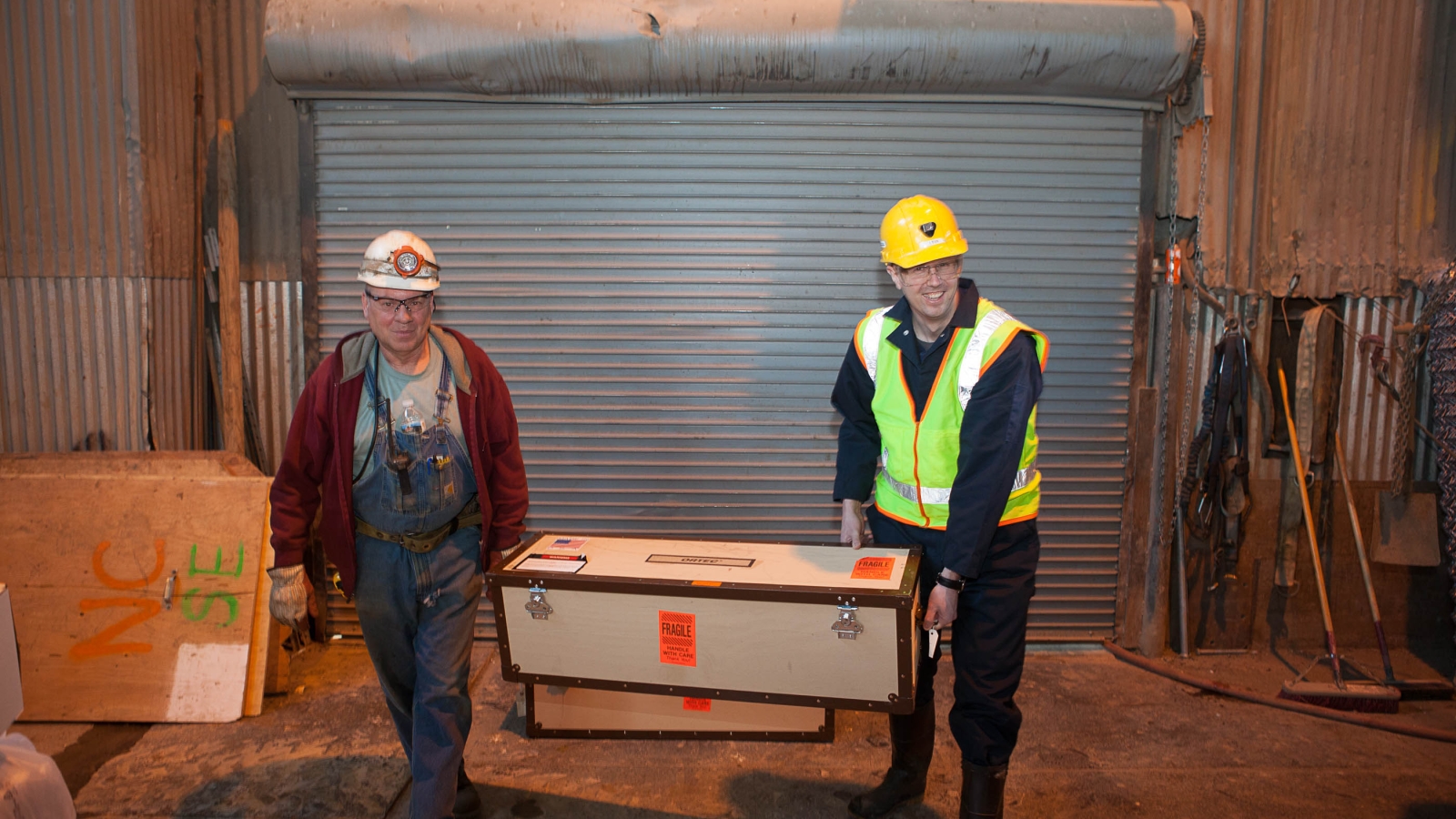On May 19, 2012, the Yates Shaft began full operations, opening the door to science research and providing the infrastructure for continued expansion to the world-class underground laboratory at Sanford Underground Research Facility (SURF).
When the mine closed in 2002, water levels rose to the 4550 Level, leaving portions of the Yates Shaft under water. The shaft needed a complete overhaul, which began in November 2008.
The monumental task included refurbishing the shaft, an 18-month project; designing a new cage specifically to convey the LUX detector; and constructing a tower to support the rope dogs—a safety system designed to stop the cage in an emergency, all to make science possible.
"For science to be successful, equipment, supplies and, of course, researchers all need to travel to and from the underground. Since 2012, the Yates crews have ensured that can happen consistently and reliably. Moving liquid nitrogen, accelerator components, germanium crystals for Majorana and the LUX detector are great examples of how the Yates Shaft has served the SURF science community over the years." —Jaret Heise, science director
"As the experiment was built, we encountered many challenges, including moving supplies. But the joint efforts of our team and the 'can-do' attitude of the SURF staff allowed us to keep moving forward."
—John Wilkerson, principal investigator of Majorana.
“We want to make sure the ropes get retired at the proper time because we don’t want to put lives at risk.”
—Mechanical Engineer Mike Johnson"We use mostly radio when we move loads under the cage. And we have to lower the cage real slow to avoid swinging or swaying."
—Nathan Engle, Yates hoist operator
“Moving LUX underground was quite literally the smoothest operation of the whole project. We did a full-scale mockup to see how it would move from the Surface Lab to the Davis Campus. When we moved the real detector, one could have placed an overfull cup of coffee on top of it, and not a drop would have been spilled the whole journey. It literally floated on air.”
—Rick Gaitskell, co-spokesperson for LUX
pounds of rope (16,809 kilograms) connect the cage to the hoists
feet of rope (1,829 meters) winds around each hoist
“Everyone knows those hoists are the number one most important thing for this place to keep in operation. We’re real lucky as far as crews go,” he said. “The safety aspect of the people on the other end of the rope is huge. It’s a real big responsibility and they handle it very well. I'm really proud of the work they do.” —Gary Larson, facility maintenance foreman
The safety of those traveling on the cage rests in the hands of the hoist operators who “drive” the cages up and down the shaft. While they do not actually see the people they transporting, the hoist operators are always aware of their human cargo and strive to make their trip up or down as safe and comfortable as possible.
But they do more than just run the hoists. During their 12-hour shifts, hoist operators perform regular maintenance on the equipment between running loads.
Nathan Engle and Greg Crotty, both hoist operators at the Yates Shaft, agree safety is a high priority. But good communication and trusting the people they work with is essential. “I’d say everybody has good communication and are professional,” Crotty said. “Safety has got to be the number one priority for everybody.”
“You have to trust everybody.” —Nathan Engle, hoist operator.
Not only must operators learn how to operate the machines, they must learn the proper terminology, much of which carried over from the mining days. “Mining has its own terminology,” said Engle. “What we would call a pulley, they call a sheave head.”
Crotty has been a hoist operator since the Homestake mining days. “We went through parts quickly and wore out a lot more things when we were mining,” said Crotty. “We were running these hoist a lot harder, too—more speed and more weight. We used to run the drums around 30 rpms and now we only run them at 7 rpms.”
Two motors power the cage hoists each capable of 1250 horsepower. That's three times the horsepower of an average sports car.
The weight of the flywheel for the the ore—or about the average weight of six male African elephants
The cage is lowered and raised at 500 feet per minute (152 meters per minute). It's about a 12-minute ride to the 4850 Level.
During mining days, the cage ran at 2,000 feet per minute (610 meters)—about a 3-minute ride to the 4850 Level.
The entire crew takes safety seriously. “You do everything as safely as you can and you always want to be aware. Everyone watches out for each other,” said Joe Sigdestad, an infrastructure technician.
“The workers in that environment are very safety conscious,” Girtz said. “That’s why there are so few incidents. Every day the guys go to work in a high-risk environment and they are doing it safely. Big recognition goes to those who put it to use every day at work.”
During top-down maintenance, supplies for the science happening at the Davis Campus comes from the nearby Ross Shaft.
"Science has changed some plans around and restructured some things to make it so that we can minimize our impact on the maintenance and have group everything into one morning a week," said Doug Tiedt, research scientist. "That all comes down in one batch."
"As SURF's capabilities expand, expectations from our science experiments are able to grow in kind. Each of us plays a strong role as we continue to evolve and mature as a laboratory, and the Yates Shaft crew presents a good example. Providing transportation for equipment and personnel has transformed over time into ensuring liquid nitrogen deliveries and dewar swaps take place over weekends or during emergency situations. Bottom line is that the Yates Shaft crew helps ensure safe and successful operation of many of the experiments at our facility." —Jaret Heise, science director
This article was written by Constance Walter, Christel Peters and Matt Kapust. Photography by Matt Kapust.

